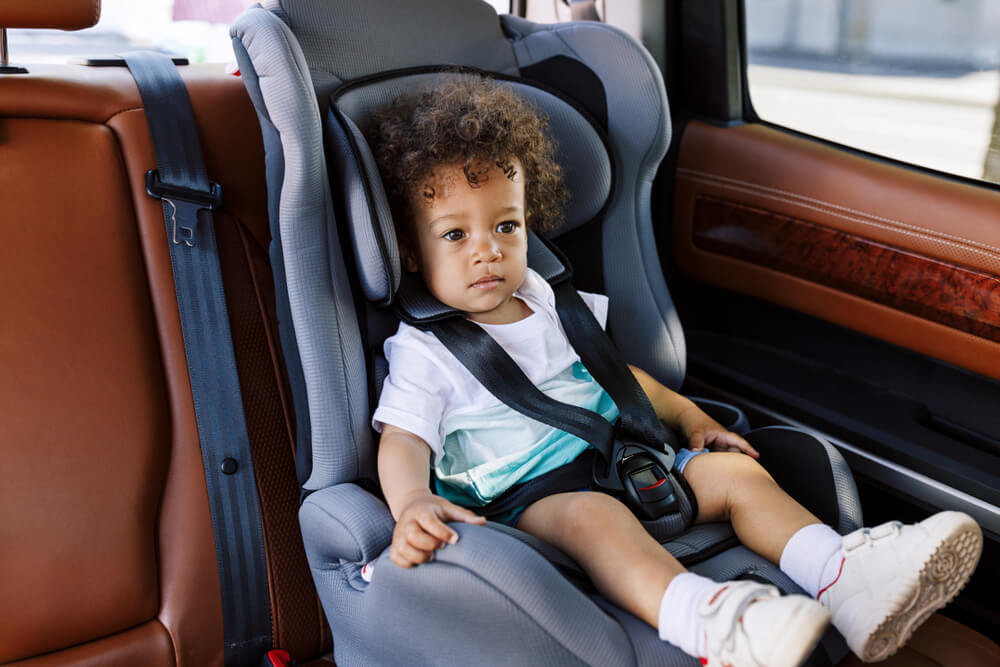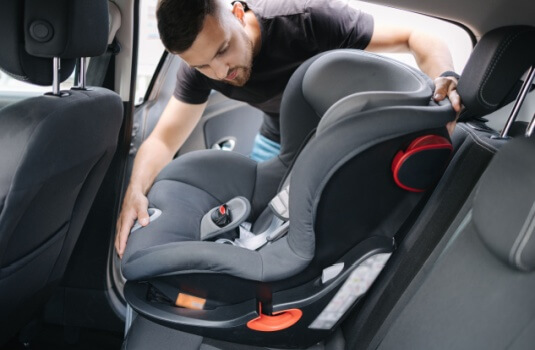
You just brought your baby to your Georgia home for the first time — hopefully in a rear-facing newborn car seat. You have so much to learn, experience, and explore together as your child grows and develops. You’re looking forward to every new day.
Just make sure that all your travel plans with your young child go off without a hitch. Be sure you have the proper auto insurance for your growing family’s needs and the right types of car seats for every stage of your child’s pre-seatbelt life. If you’re unsure, this car seat guide will help you determine the correct apparatuses that comply with Georgia law.
Why Choosing the Right Car Seat Matters
Your baby will change at what might seem like a confusingly rapid pace. You now have a newborn, but soon you’ll be holding an infant, and then you’ll have a squirming toddler, a preschooler …
With every new stage of development, your child will grow taller and stronger and heavier. Your loved one’s car seat must be able to keep up with the changes. Your child is only safe when properly seated and strapped into the vehicle. That’s why it’s so important to know the right age for car seat and booster seat usage.
You also have car laws in Georgia to contend with. Every child under the age of 8 must be restrained in an age-appropriate apparatus while being driven. And they must remain backseat passengers until age 8 or 57 inches in height.
That’s why you have this guide to the proper car seats based on your child’s age, height, weight, and legal requirements in the State of Georgia.
Now, review how and why the type of device changes to keep up with your child’s various stages of growth and development.
Infant Rear-Facing Car Seats (0–12 Months)
Studies have shown that rear-facing car seats provide the highest possible level of safety for newborns and infants. The design offers extra protection for the young child’s very fragile head, neck, and spine.
A baby’s head is proportionately larger than its neck, creating a vulnerability in the event of a jarring crash. But a rear-facing model absorbs and redistributes the impact so that there’s less risk of damage to the neck or spine.
The seat securely attaches to the rear of the vehicle with a system of harnesses and tethers. The rear-facing design can also protect the child from flying glass or other debris that could act like shrapnel if a violent collision occurs. The rear-facing model is recommended until the child is at least about a year old.
Convertible Car Seats (9 Months–4 Years)
The design of the convertible car seat takes it from rear-facing for newborns and infants to forward-facing as your child grows.
It’s advisable to keep your young child in a rear-facing model for as long as possible, but that will depend on the height and weight limits placed on the device by the manufacturers. In some cases, you might be able to keep your child in the rear-facing position for as long as two years, but in others, the switchover must occur sooner.
Either way, the convertible model should be an appropriate solution until your child reaches the age of about 4 or so.

Booster Seats (4–12 Years)
Lose the harness. Use the seatbelt. The booster seat age in Georgia starts at about 4.
You’ll know your young child is growing and maturing when they get that booster. Up to this point, your various car seats used their own harness system to keep your child safe and secure. The booster seat uses your backseat seatbelt to secure the device and child.
Now, you might be wondering: If your car’s seatbelt is the method of securing your child in a booster, why not lose the booster altogether and simply strap your child into the backseat seatbelt?
The answer is that your child is not tall enough to use the seatbelt properly. The safety device won’t fit correctly over the chest and hips. In raising the child’s profile, the booster enables the seatbelt to fit as it should and offer more effective protection.
In fact, studies have shown that young children in booster seats are 45% less likely to be injured in a car crash than those who are restrained by seatbelts alone.
Now you have another decision to make: high-back or backless booster seats? High-back seats offer additional protection for the head and sides and cause the seatbelt to fit better. This design is especially preferred for situations in which the driver must swerve, brake hard, or take other sharp evasive action to avoid collision. In such a case, the high-back booster might keep your child more restrained and less likely to suffer injury.
All-in-One Car Seats: A Convenient Long-Term Solution
While a convertible car seat adjusts from rear-facing to forward-facing positioning and can be adjusted to accommodate your newborn up until about the age of 4, an all-in-one car seat is like a convertible model seat on steroids. It can take your child from newborn through the booster years without a seat upgrade.
Many prefer having a rear-facing infant seat for their newborn until about their first birthday and then upgrading to the all-in-one model.
All you have to remember when using an all-in-one seat is to follow the manufacturer’s restrictions for height and weight. All children develop at different rates, so any car seat that’s appropriate for one child might offer less than optimal safety protection for a child that’s grown at a faster rate — so don’t go by age alone.
Ensuring Proper Installation and Use at Every Stage
Your child’s car seat is absolutely useless if it is installed wrong. That’s a stark reality that you should always keep in mind as you remove and install car seats. This might be particularly true if you have a type of seat that converts to stroller use, so you or others are constantly uninstalling and reattaching it.
Never throw away the manufacturer’s installation instructions. Most will also direct you to online videos showing the specific process for installing that model. You can also find instructional videos of all kinds on YouTube. And finally, many local fire departments will help with the installation if necessary.
Once safely and securely installed your car seat, you’re best off if you leave the seat in the car rather than constantly removing and reattaching it. But if you must do so, always make sure to re-secure it properly every time.